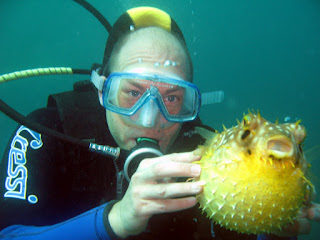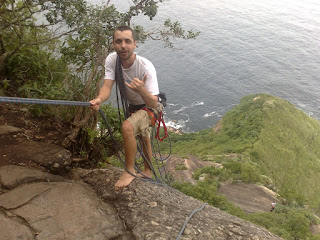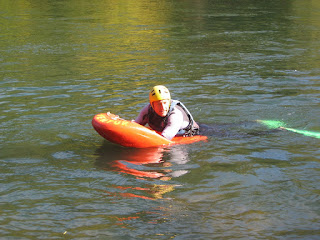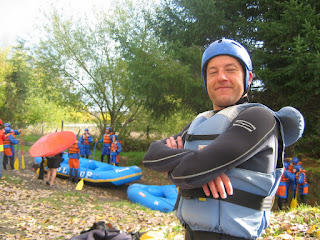The village of Pucon is dominated by the looming sight of the Villarrica volcano. At 2847m (9340ft) it is one of the highest volcanoes in the area. It is
active, having erupted just last year. Currently most of the activity is in the neighbouring Llaima volcano, which erupted twice this year. All adventure travel agencies in Pucon offer climbs to the top of the Villarrica.

Some guides like to start earlier than others. Some guides like to start at 4AM. That´s 4AM, which is 4 in the
morning night. That way the climbers can enjoy the sunrise over the volcano, and be back in the village by 2PM. Our group consisted of 8 climbers and 2 guides. On our way to the volcano we got a bit delayed by a flat tire, and arriving at the base of the mountain we got delayed a bit more because the guides called us for a group huddle.
It was bitter cold. What´s more, contrary to the weather forecasts it was very cloudy. So cloudy that it was doubtful we could make it to the top. They gave us a choice of turning back right there and trying again another day, or giving it a try. The functional difference between the two is that as soon as you start the ascent you´re committed to paying.
I figured that the game-theoretically optimal move was to give it a try, by the Wayne Gretzky rule: You miss 100% of the shots you don´t take. Two people turned back. Of the six that did go, only three would make to the summit.
So off we went. The two guides and one randomly chosen climber had head lamps, the rest of us shuffled along in total darkness.

Picture illuminating the concept of total darkness.
After about an hour´s worth of climbing the group had separated into two: four of us were climbing with one guide, two others with the other. After an hour and a half we started getting some light. It was very cloudy. Our guide ominously said that if the visibility did not improve by the time we got to the
Pinguinera point, he´d pull the plug. We crossed our fingers.
The Pinguinera is so called because one can look all the way back and see groups of climbers shuffling up the mountain like penguins. If there´s light and visibility that is. At the Pinguinera we were just getting to the top of the clouds. The sun was starting to rise, giving the clouds spectacular colours. Our guide Guillermo determined that we could tentatively continue, as long as the clouds would not rise.

The Pinguinera is also the point where it gets icy, so we had to put on our crampons and got a crash course in how to use an ice axe. I was absolutely loving the experience. We were already above the clouds and other mountain tops, the view was fantastic. The climb was labouring and got very steep but my heart rate was comfortably under control. It was exhilerating. I want to do more of this!
Luckily the clouds stayed where they were. The summit seemed deceptively close but kept on receding as we climbed towards it. But then, suddenly, at 9:50AM, there it was!


The order of arrival: Netherlands gold, Switzerland silver, Brazil bronze.
We had a nice picnic at the summit and then walked around the crater and admired the views to the inside and outside. There was no lava visible because the Llaima is currently siphoning it off, but there was plenty of smoke and sulphur everywhere.

There are two ways to get down a snowy mountain. One is to put on crampons. It´s slow, labouring, hard on the knees. The other way is to tie a bib around your posterior and slide down the mountain on your ass. It is fast, easy on the knees, and above all,
A HECK OF A LOT OF FUN.

Sliding down the mountain. The ice axe is used for controlling the speed.
We slid past a number of groups that were still doing the ascent. Coming down to the Pinguinera there is that big ice sheet that has one narrow twisty gully running through it. Our slide turned into a roller coaster through the gully. Awesome fun!
We got back to the base of the mountain at 12:15. In the evening we soaked ourselves at the local hot springs, along with fellow travellers Miriam from Switzerland and Brian from the US. They are travelling through South America for 5 and 6 months, respectively. We met many others who are travelling for months as well. So to all of you who are saying "you´re lucky to get to travel that long": One month is nothing!











































